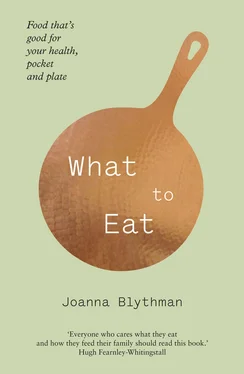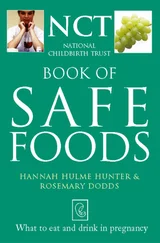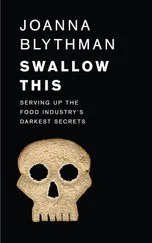Reconstructed, over-processed foods don’t have the trustworthy track record of whole foods in their natural form. They contain novel ingredients and obscure additives produced by hi-tech methods and have only been on our plates for a relatively short period of time. This is already long enough to suggest that they are significant contributors to the major modern problems of obesity, food allergies and diet- related disease.
OK, there are exceptions. Cheese, butter, yogurt and bread are all processed foods, and, let’s face it, few of us are going to get round to making these ourselves. But you can buy those that were made in the traditional way, using time-honoured techniques to alter primary ingredients.
Don’t buy food with ingredients you won’t find in a domestic larder
It’s a safe bet that you don’t have mono- and diglycerides of fatty acids in your storecupboard, nor high-fructose corn syrup, guar gum, partially hydrogenated vegetable fat, soya protein isolate, liquid pasteurized egg nor maltodextrin. The only people who have these, and other weird but not wonderful synthetic chemical food ingredients lining their shelves, are lab-coated food technologists whose job is to find new and ever more inventive ways to make even more money from the over-processing of food. And guess what? Your health is not their priority. So if you don’t know what an ingredient is, or it has a long, unpronounceable name that reads like an algebraic formula, then don’t buy any food product containing it. Every item you see listed on an ingredient label should be readily understandable and familiar. If it isn’t, avoid it like the plague.
Be sceptical about nutrition advice from ‘experts’
The dietetic establishment has led us to believe that food is merely fuel and healthy eating is just a straightforward matter of calculating the number of calories we need for our body weight and activity level. Grub in, energy out. That’s all there is to it. This mechanical approach plays right into the hands of the food industry. Following this nutritional script, it doesn’t matter whether we eat technofood or natural food because everything comes down to a simple arithmetical calculation. Common sense alone dictates that there is more to food and eating than that.
Don’t hold your breath for learned, silvery-haired nutritionists to spell out the universal magic formula for healthy eating. Research into what constitutes optimum nutrition is best thought of as a work in progress, and anyone who tries to tell you otherwise is being simplistic and misleading. So instead, use your common sense. Base your diet on tried and tested unprocessed foods, studiously ignoring fads and showing healthy scepticism towards everything from top-down government health orthodoxy to the latest trendy diet.
These days, many foods come with an abundance of nutrition labels and supposedly helpful logos to help you assess the healthiness or otherwise of their contents. Mostly this is a confusing waste of time. Sometimes it is a deliberate red herring used by the manufacturers to bamboozle you and make you think a low-grade processed food is better than it might otherwise seem. Ignore nutrition labels and logos, and cut to the chase by looking at the ingredients label. Basically, the more ingredients listed, the more suspect the product is.
Don’t dismiss traditional food knowledge
Certain foods – beetroot, celery, raw milk, ginger, suet, garlic, yogurt, cabbage and carrots, for instance – figure in traditional medicine systems around the world as having beneficial medicinal and nutritional properties. It is currently fashionable to dismiss any such collective wisdom on the grounds that it isn’t ‘evidence-based’ – in the narrow, western, medical sense – and so little better than superstition. This is blinkered thinking. There is much to be said for the quasi-medical, nutritional knowledge that has been built up by different cultures and tested out and observed informally in human populations over time. When your grandmother told you that a hot honey and lemon drink would do you more good than any cough medicine, she wasn’t making it up. She was simply passing on the accumulated wisdom and experience of the generations that came before her. That knowledge is like gold dust.
Practise vegetable-centric eating
Of course, it doesn’t make sense to shut your ears entirely to ongoing discussions of nutrition, and there is some overlapping middle ground where otherwise diverse researchers and would-be authorities can agree. There is, for instance, no argument that vegetables are brilliant for you. It’s not just all the vitamins, minerals and soluble fibre that are beneficial; research is gradually identifying a number of phytochemicals, or natural compounds in vegetables, that are both health-enhancing and protective against disease. The early twentieth-century view, that vegetables were relatively unimportant in the diet because they consist mainly of water, has been radically revised. Currently, putting vegetables more at the core of your diet seems to be a key strategy for being healthy. Think in terms of vegetable-centric eating, where protein, fat and carbohydrate-based ingredients play second fiddle to vegetables, not the other way round.
Eat some protein
Realistically, you aren’t going to live solely on vegetables. A bit of protein still has its place, whether it’s from fish, meat, eggs, dairy foods or from vegan sources, such as pulses. Protein is emerging in research as the macronutrient most capable of satisfying hunger. As your grandmother might have put it: ‘It keeps you going.’ If you do eat protein in the form of meat, poultry, milk and eggs, try to make sure that it comes from free-range animals that have been fed on grass and other natural pasture foods. It will be better for you.
Rethink what you have been told about fat and cholesterol
That big bad dietary bogeyman – saturated fat – is being rehabilitated. Contrary to what we have been led to believe, there is an absence of evidence to support the nutritional mantra that fat is bad for health, or even to back the assumption that the naturally occurring fat that you find in whole foods is intrinsically fattening. Increasingly, the health benefits of natural saturated fat are being acknowledged. Saturated fats are key components of cell membranes and essential for the production of certain hormones. They act as carriers for important vitamins, and are needed for mineral absorption and lots of other biological processes. The ‘saturated fat is bad for you’ gospel is likely to melt away in coming years. This is one to watch.
Likewise, while we were once told authoritatively that foods that naturally contain cholesterol, such as eggs and whole, full-fat milk, were bad for the heart, this nutritional script is being hastily rewritten to concede that the cholesterol we eat in food does not lead to heart disease, and acknowledge that some dietary cholesterol is actually essential for maintaining health. Cholesterol is a vital element in our cell membranes. It’s no accident that human breast milk is very rich in the substance. Is it likely that nature would design a baby’s first food that was a killer?
Saturated fat and cholesterol found in natural foods such as butter and meat have a place in an aware diet. Man-made fats manufactured from artificially hardened, hydrogenated polyunsaturated oils, on the other hand, which were once recommended as the healthy alternative, have now been shown to be pretty lethal. This just goes to show how the nutrition establishment cannot be relied on for sound eating advice.
Cut back on sugar, sweeteners and refined carbohydrates
All nutritionists whose salaries aren’t paid by the sugar industry agree that sugar is a nutritional disaster. The main problem with sugar is that in its refined form we can consume huge quantities of it, in products such as drinks and sweetened fromage frais, almost without noticing. Unlike honey or treacle, refined sugar has no redeeming nutritional features. It’s difficult, because many foods that contain sugar are enticing, but there’s a strong case for keeping your consumption to a minimum.
Читать дальше












